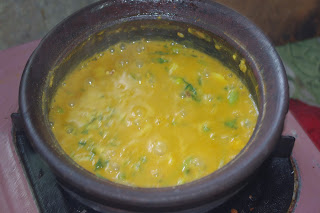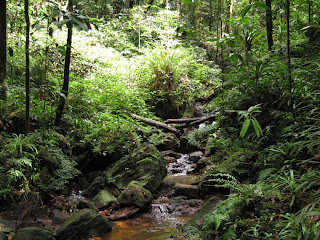Sinhala and Hindu New Year
Cultural anthropological history
of the 'Traditional New Year' which is celebrated on month of April, goes back
to an ancient period in Sri Lankan history. Various beliefs, perhaps those
associated with fertility of the harvest, gave birth to many rituals, customs,
and ceremonies connected with the New Year. The advent of Buddhism in the 3rd
century BC led to a re-interpretation of the existing New Year activities in
the Buddhism light. The majority of the people in the country are Buddhists,
and as such, it is that the Buddhist outlook was predominant in transforming
the New Year rites to what they are now.
Hinduism, on the other hand,
existed side by side with Buddhism, in medieval times. New Year practices
interpreted in the Hinduism way developed among the Hindus[Buddhism
and Hinduism were historically connected with each other. Their philosophies
were running along parallel dimensions, except for certain ultimate truths
concerning the self, the way to achieve emancipation and the nature of a
creative god (which Buddhism denies) and nirvana . There was no serious
contradiction in New Year rituals that are found among the Buddhists and
Hindus.
The mythological backdrop of the
New Year is probably based on Hindu literature. The Prince of Peace called Indradeva
descends upon the earth to ensure peace and happiness. He comes in a white
carriage wearing on his head a white floral crown seven cubits high. He first
dips, like a returning space capsule plunges, breaking earth's gravity, into a
`Kiri Sayura' or sea of milk
Modern day activities related to
the celebration of the traditional New Year is based on auspicious times given
by the astrologers. The New Year celebration is therefore can be thought as a
complex mix of Indigenous, Astrological, Hindu, and Buddhist traditions.
In month of Bak in the Buddhist
calendar (or the month of April according to the gregorian calendar), when the
sun moves (in an astrological sense) from the Meena Rashiya (House of
Pisces) to the Mesha Rashiya (House of Aries) in the celestial sphere; Sri
Lankan people of Sri Lanka begin celebrating Sinhala New Year or Aluth
Avurudu (in Sinhala). It marks the end of the harvest season and also
coincides with one of two instances when the sun is directly above Sri Lanka.
However, unlike the celebration
of the new gregorian calender
year at midnight on December 31, the Sinhalese traditional New Year begins at a
time determined by astrological calculations. Also unlike 31st night
celebrations, where old year ends at midnight and new year begins immediately
afterwards; the ending of the old year, and the beginning of the new
year occur several hours apart from one another (this span of time is
usually 12 hours and 48 minutes, which starts when the sun, as a disk, starts
to cross the astrological boundary between 'House of Pisces' and 'House of
Aries' and ends when the crossing is complete. The halfway point is considered
as the dawn of the new year). This period is, referred to as the Nonagathe
(or the 'neutral period'). During this time Sri Lankans are, according to
tradition, encouraged to refrain from material pursuits, and engage solely in
either religious activities or traditional games.
Cultural rituals begin shortly
after the beginning of the Sinhala new year with the cleaning of the
house and lighting of an oil lamp. In some communities, women congregate to
play upon on the Raban (type of a drum) to announce the incipient
change in the year. All the families as one carries out variety of rituals in
exact timings of which are determined by astrological calculations - from
lighting the fire to making the Kiribath (milk rice) to
entering into the first business transaction and eating the first morsels. The
rituals vary slightly based on the locale. However the core of the celebrations
remains the same.
The approach of the each
auspicious time for various rituvals is heralded by the unmistakable sign of
very loud firecrackers. Although loud firecrackers are an environmental
concern, and a safety hazard, especially for children, this remains an integral
part of the celebrations throughout Sri Lanka.
Once the important rituals are
done, the partying begins as families mingle in the streets, homes are thrown
open and children are let out to play. The ubiquitous plantain is dished out
alongside celebratory feasts of Kavum
(small oil cake) and Kokis (crisp and light sweetmeat, originally from
the Netherlands). However, the extent of outdoor activities depends largely on
the neighborhood. The suburban communities tend to have such social gatherings
than urban or city dwellers.
Aluth Aurudu is an important national holiday
for both the cultures of the Sinhalese people and the Tamil people of Sri Lanka.
The celebrations are given wide coverage and patronage from state owned media
as well as private media.
www.wikipedia.org





















































